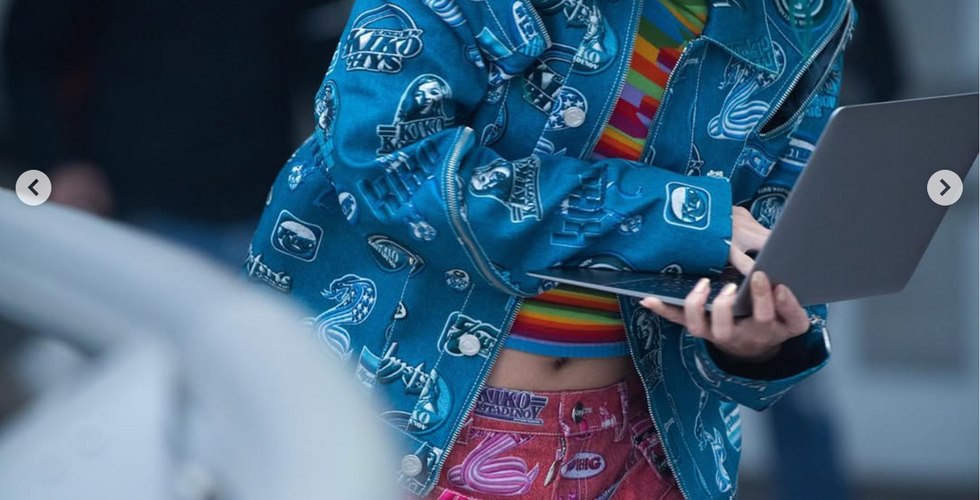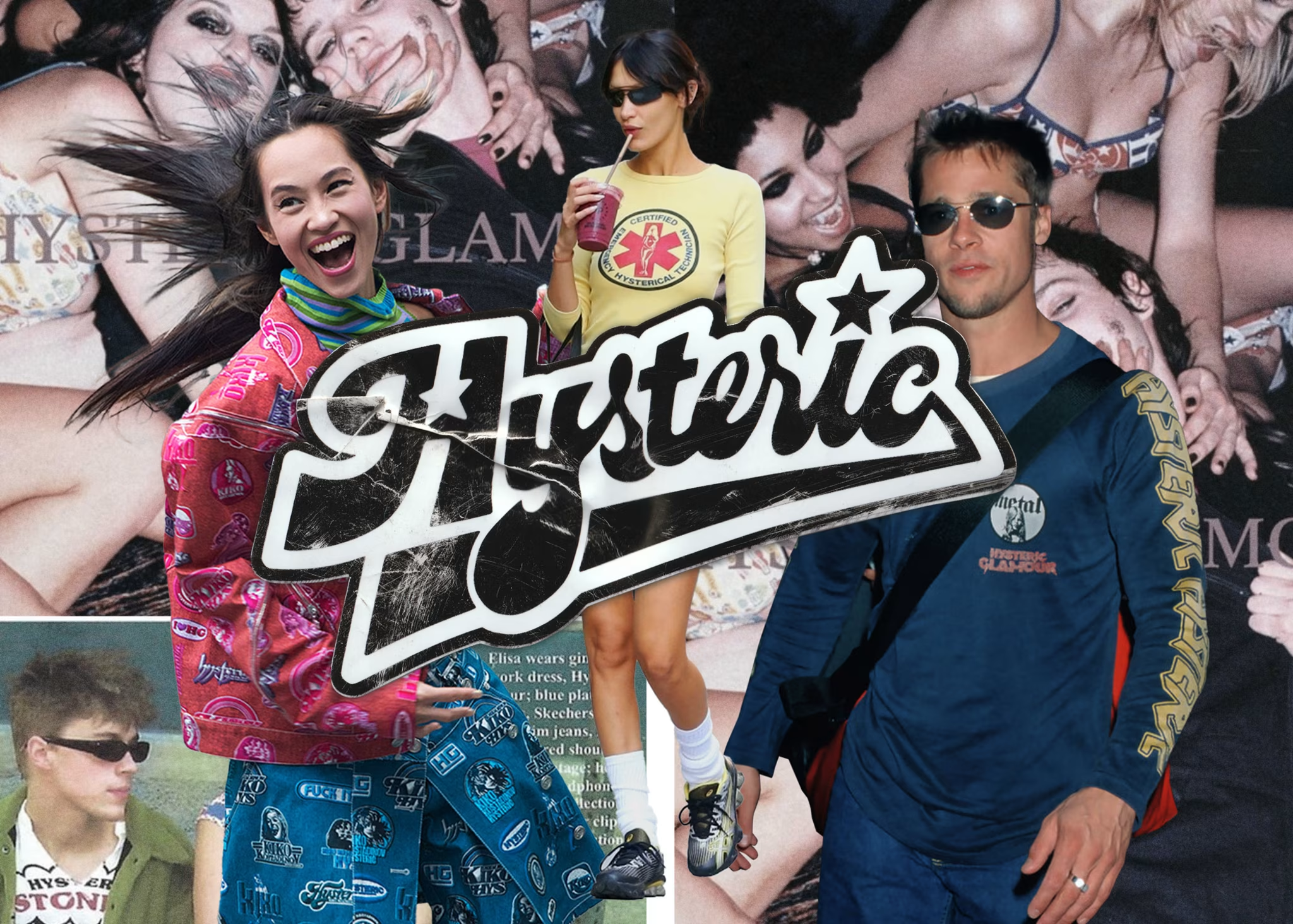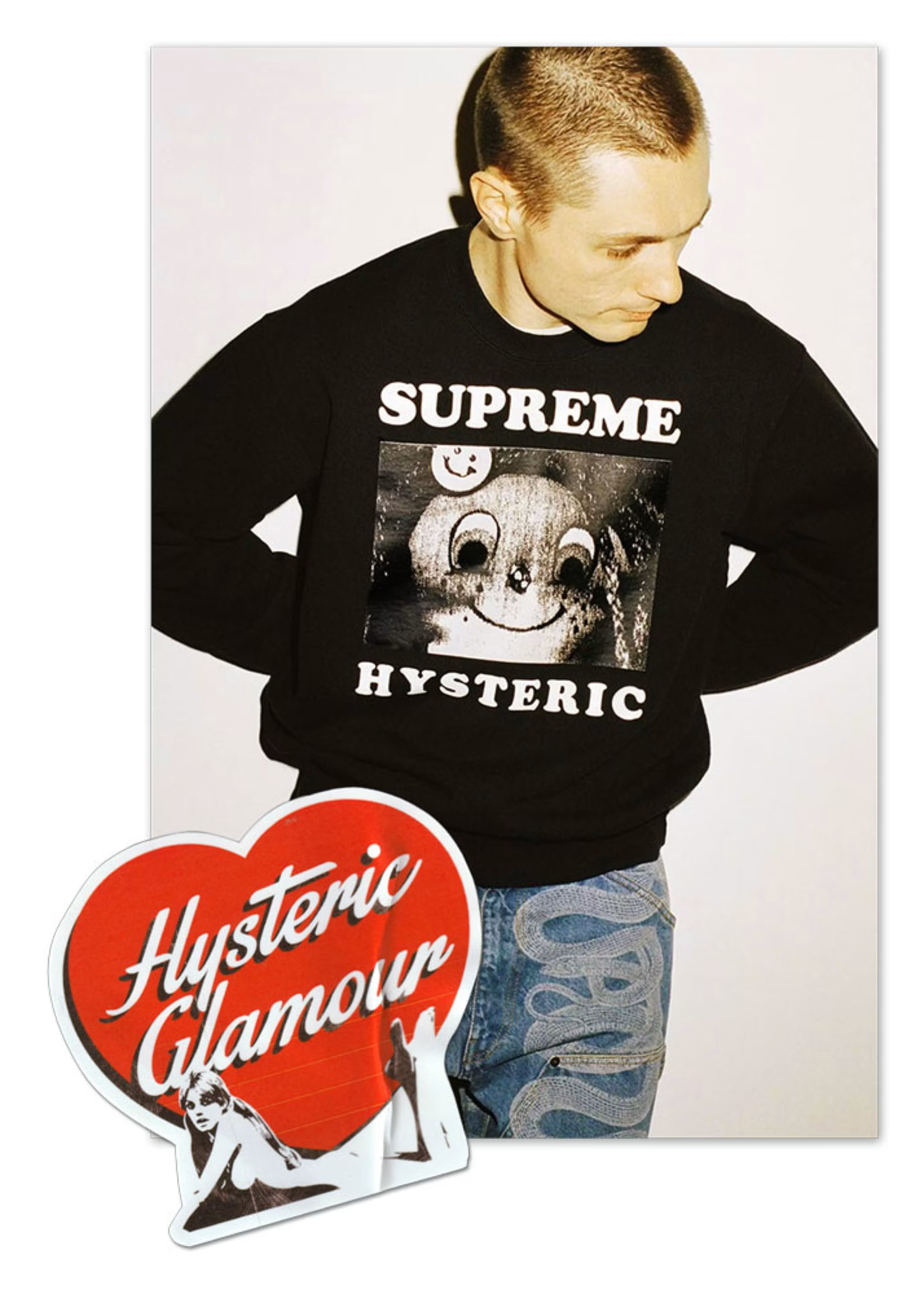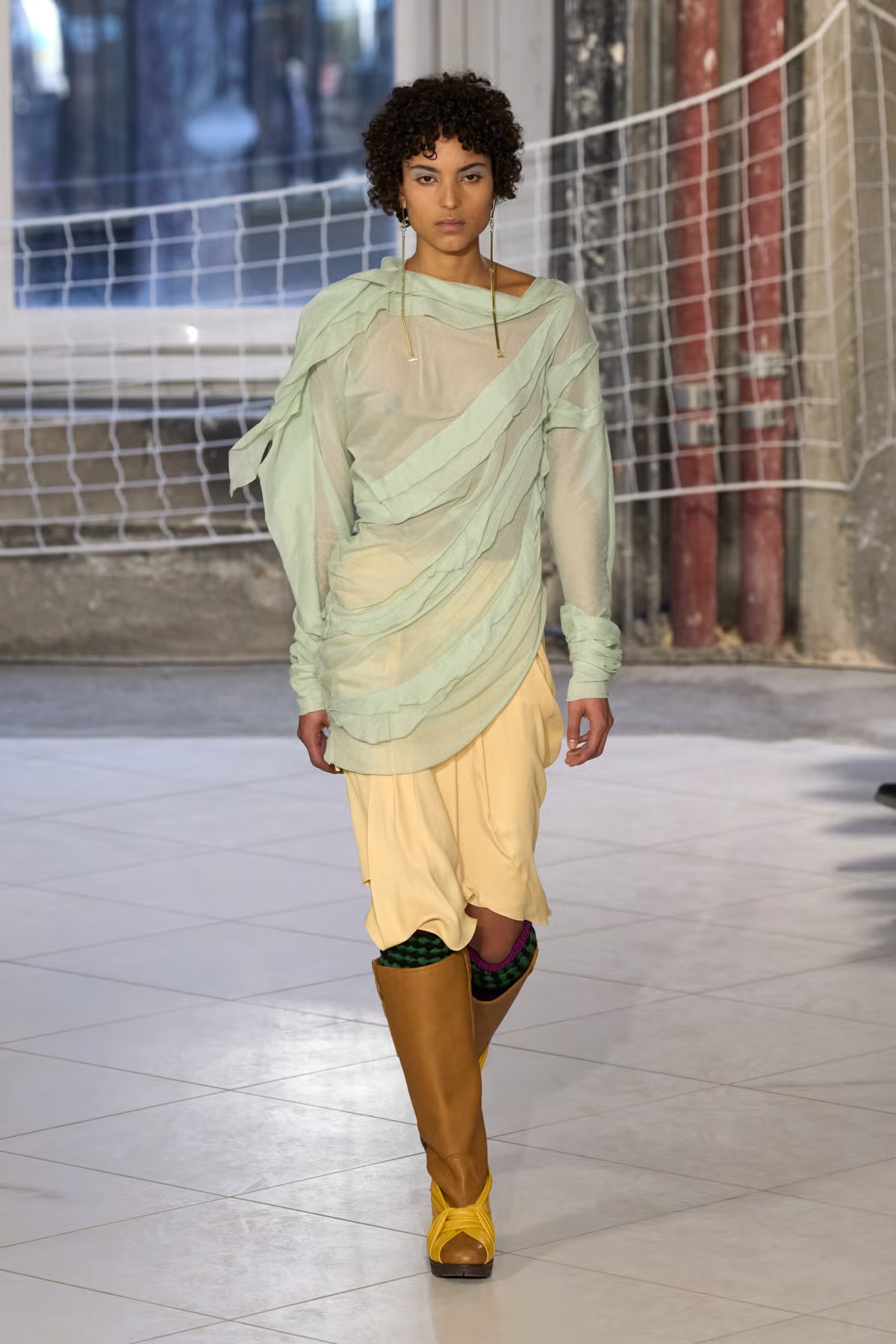Post-Authenticity - The only Trend that matters | Weird is the New Signal
- antjesabine
- Jun 23
- 7 min read
Updated: Aug 31
By Sabine Warlich - Brand, Trend and Innovation Strategist | 20 Years in Global Premium Women's Fashion.
Consumer & Culture Trend Report 2025
The area of Post-Authenticity
"Fashion is no longer about defining the ideal self. It’s about designing for the plural self; fragmented, evolving, beautifully contradictory." - Sabine Warlich
Executive Summary
We're moving beyond authenticity into a cultural era of post-authenticity — where contradiction is not just accepted but embraced. Identity is no longer singular. Individuals are increasingly living out paradoxical identities, and rather than being confused or conflicted by this, they’re empowered. Brands must learn not just to accept this, but to design for it.
>>This shift fragments identity, disrupts marketing categories, and makes traditional segmentation models obsolete.
THE ERA OF POST-AUTHENTICITY
The Future of Brand Strategy Isn’t Digital — It’s Human Meaning
Key Insight:
After 20 years of working in brand, innovation, and trend strategy across the global fashion industry, one thing is clear to me heading into 2025 and beyond: We’ve moved beyond “authenticity” as a brand differentiator. We enter the Post-Authenticity age — where contradiction is empowering, and identities are hybrid, layered and fluid.
"The future of brand strategy hinges not on category codes or digital tactics, but on understanding shifting human meaning? "
The most important cultural shift isn’t a colour trend, a tech innovation, or even the rise of sustainability. It’s the growing comfort people have with contradiction and what that means for how we design identity, aspiration, and belonging. Things are getting weird but it’s the kind of weird that tells us something profound about what’s next.
Here's a breakdown of these new core values and how you, as a strategist or creative leader, can operationalise this thinking.
"Things are getting weird, but it’s the kind of weird that tells us something profound about what’s next. "

Madonna on duality and Post-Authenticity - Why Weird is the New Signal
KEY CULTURAL SIGNALS IN THE ERA OF POST-AUTHENTICITY
Rethinking Identity, Status, and Aspiration in Fashion.
1. Contradictions Are the New Archetypes
In fashion, we used to chase the archetype. Today, we design for the intersections. From paradox to empowerment. I’m seeing more and more hybrid archetypes. Suddenly it’s impossible to describe who a typical feminist is, where a typical Republican is from, where to draw the line between a critic and a conspiracy theorist. These aren’t hypocrisies — they’re expressions of multidimensional selves.
Strategist’s Note:
Your personas are obsolete. Instead build for fluid, contradictory selves.
From a brand lens, this is identity fragmentation, but from a cultural lens, it’s identity expansion. This isn’t new. Humans have always been complex. What’s new is that they’re now publicly and proudly embracing it.
Explore: Try to feel for a moment what it means to reject society and have millions of followers on TikTok, or believe in democratic ideals and trust a republican leader to make them happen. Humans are messy, and in an algorithmic world where two-dimensional authenticity has forced us into shallow labels and tribes, we’ve been ignoring the fact that in our most authentic state, humans are not easy to categorise at all.
Brand Case Study
Take Bella Hadid’s recent reinvention — the poster girl for high fashion becomes the face of Cowboy Core with a touch of slow-living homestead aesthetics, while still walking couture and promoting Palestinian freedom. It’s not a PR contradiction. It’s her multiverse identity. And it resonates because it’s real.

2. Weird is a Cultural Compass, not a Risk in the area of Post-Authenticity
In trend work, we’re trained to look for outliers. But what used to be considered fringe is now where cultural gravity lives. The weird that matters isn’t just quirky. It challenges norms we didn’t realise were sacred — and points to values we didn’t know we were about to adopt.
#mommunes #billionaire bunkers #digital nomad #co-housing #AI-stylists, and #apocalyptic fashion aren't edge cases. They’re cultural signals.
Strategist’s Note:
The weird, the fringe — these are early indicators of emerging values, between dying norms and emerging values. Track the tension. Weirdness marks where norms are breaking down —and something new is emerging.
Brand Case Study
Fashion’s weirdest moments are often its most prophetic. A few years ago, seeing a designer like Kiko Kostadinov collaborate with both edgy underground creators and heritage brands would've raised eyebrows. Today, it’s strategic because it will go mainstream. Rather than dilute his vision for the mass-consumption, Kostadinov is converting fans to the church of the weird. In the fast-fashion era, Kostadinov's singular weirdness is an advantage: "It's not copyable!"
3. Status Is Shifting: From Seen to Understood in the area of Post-Authenticity
Displacement of Old Status Markers. Quiet is the new luxury. There was a time when status in fashion meant maximum visibility: logos, front-row invites, and hyper- curated Instagram feeds. Today, wealth, success, love being redefined. Privacy is the new fame. Influence now lives in Substacks and closed group chats. Curation is happening in closed discords, not the explore page. Wearing niche, untagged, “no-name” fashion is the new quiet luxury.
Strategist’s Note:
True aspiration isn’t performative anymore. It’s relational. People want to be understood, not followed. That’s a different brief for fashion brands. Stop chasing virality (i.e. Gucci) . Start cultivating trust and quiet influence.
Brand Case Study
The Row has become the go-to label for the fashion elite who don’t want to signal wealth overtly. No logos. No press tours. No influencer overload. Yet The Row is the most desired brand in the most discerning fashion circles. It’s a brand that signals sophistication only to those in the know. You’re not showing off when you wear The Row. You’re joining a club that doesn’t advertise.
More here

4. From Romantic Love to Chosen Trust in the area of Post-Authenticity
Decentring Romance - Trust is the New Glue. Fashion brands have long been built around the nuclear ideal: romantic love, aspirational couples, heteronormative stories.
Now we’re seeing communities being built around trust, not romantic love. Friendship is becoming the primary relationship. Chosen community is the new nuclear family.
Strategist’s Note:
Loyalty is shifting from products to shared values. This has profound implications for brands. The rise of chosen family and friendship-first lifestyles changes everything — from product design to storytelling. Ask yourself: Are you designing for nuclear families or chosen collectives?
Brand Case Studies
Telfar — “Not for You, for Everyone”
Telfar Clemens built his fashion empire not on exclusivity, but radical community access. The brand’s mantra rejects traditional couple/family-based aspiration and instead centres shared values, affordability, and collective empowerment. Telfar’s tribe of customers is a co-constructed identity, not a top-down demographic. It’s a community in motion, built around mutual support, trust, and access.

Strategic Brand Tools in the area of Post-Authenticity
1. Contradiction Mapping in the area of post-authenticity
Identify the paradoxes your audience embraces. Design messaging that reflects, not resolves, those tensions. List the paradoxes your audience lives with. Now, flip your brand’s messaging or offer to hold space for both sides.
Strategist’s Note
Don’t look for what’s common. Look for what’s contradictory — and cherished. That’s where identity is being rewritten.
2. Weird Signal Tracker in the area of post-authenticity
Document fringe behaviours or aesthetics that evoke strong emotion or discomfort. Those are predictive gold. What feels “off” or fringe today might define tomorrow’s norm. Use weirdness as a cultural litmus test. Observe emotional friction — that’s where values are evolving.
Strategist’s Note
Chase the right kind of weird. Track cultural weird in media, behaviours, community structures, etc. Weird isn’t always a vibe. Sometimes it’s the early tremor of a seismic shift. What feels strange now will be normal in 18 months. Highlight those that evoke visceral reactions. Investigate what norms they challenge.
What this means for Fashion Brands now.
Belief-Based Segmentation | Move beyond demographics. Forget age and income. Instead segment based on evolving belief systems, especially those built around autonomy, trust, nonconformity, and chosen identity. |
Reimagine Aspiration | Status is shifting from visibility to discernment. It’s not about being seen — it’s about being understood. What happens to luxury, fame, or success when hiding is the new show off ? |
Community as Core Offering | Consider what it means to enable trust, not just transactions. Brands that help users form, nurture, or scale trust-based communities (friendship, skill-sharing, co-living) will lead. |
Fragmentation is Opportunity | The breakdown of monolithic identities doesn’t mean chaos. It means plural pathways to relevance. Branding must move from simplicity to complexity made legible. Rethink your hero customer. Stop selling to archetypes. Start designing for people who are more than one thing. Embrace the tension in your audience’s worldview and don’t try to resolve it. Don’t force coherence, create elasticity. |
Design for Tension, Not Resolution | Let your campaigns hold contradictions. They don’t need to make sense to traditional marketing logic — they need to feel emotionally true. |
Make Your Brand a Trust Platform | Who would your customers want to share a bunker with if the world ended? That’s your community blueprint. |
Final Thought
As a brand, if you’re not designing for this new fluidity, you’re designing for a version of the world that no longer exists.
Fashion isn’t just about clothes. It’s about how we decorate our identity — and identity is becoming more complex, less explainable, more intuitive, more fragmented. So let it get weird. Let it challenge your assumptions. Because that’s where the next cultural goldmine is buried.
That’s where the future lives.
For full trend briefings, workshops, or collaboration: Sabine Warlich, Brand Strategist and Cultural Foresight. warlich_design@yahoo.com | +64 405 435 414















It's interesting how often the discussion around marketing effectiveness overlooks the foundational impact of immediate visual appeal. Even in our digital-first world, that initial glance often determines whether a message gets absorbed or ignored. I've seen firsthand how a well-crafted visual can cut through the noise far more effectively than a wall of text. However, translating that understanding into tangible, impactful designs, especially for something as direct as a flyer, can be a real challenge for many businesses. For those looking to truly master their offline visual communication, exploring resources on effective flyer design tips can provide invaluable guidance.